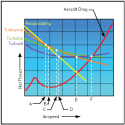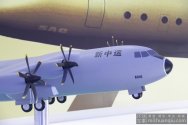That would appear to rule out Y30 or anything like A400M as the future medium transport, which used 8200kW engines.Just to add on - The paper is co-authored by the chief designer of WZ-9, Academician Yin Zeyong of the Chinese Academy of Engineering.
In particular, this paragraph from the paper:
View attachment 137102
So to put it simply, the following aircrafts are to be powered by their respective engines:
C919 - CJ1000A/AEF1300 (13000 kgf)
C929 - CJ2000/AEF3500 (35000 kgf)
Turbofan-powered regional airliner - High B/P turbofan (7000 kgf) (I'm not exactly sure if this one refers to the ARJ21)
MA700 - (Likely) AEP400 (4000 kW)
Future turboprop regional airliner, future medium airlifter, etc - AEP500 (5000kW)
You are using an out of date browser. It may not display this or other websites correctly.
You should upgrade or use an alternative browser.
You should upgrade or use an alternative browser.
Chinese Engine Development
- Thread starter jackbh
- Start date
That would appear to rule out Y30 or anything like A400M as the future medium transport, which used 8200kW engines.
I don't see how that rules out Y-30.
In fact, I see this as a nod (if not an unofficial/semi-official affirmation) to the notion that China does need a brand new model of turboprop-powered medium airlifters (nominally designated Y-30). Whether that's happening in the 2030s or 2050s is for another topic of discussion.
In the meantime, I have not seen anyone claiming or even expecting that the Y-30 will be an equivalent to the A400M, i.e. powered by four 8200kW turboprop engines and with a max payload capacity of ~37 tons.
If anything, AEP500 with 5000kW power output should already be sufficient for China's next-gen turboprop-powered medium airlifter (i.e with max payload at ~28-30 tons), which would be supplementing and then succeeding the Y-8/9 family.
Last edited:
Why 4 turboprops instead of 2 biger engines?I don't see how that rules out Y-30.
In fact, I see this as a nod (if not an unofficial/semi-official affirmation) to the notion that China does need a brand new model of turboprop-powered medium airlifters (nominally designated Y-30). Whether that's in the 2030s or 2050s is for another topic of discussion.
In the meantime, I have not seen anyone claiming or even expecting that the Y-30 will be an equivalent to the A400M, i.e. powered by four 8200kW turboprop engines and with a max payload capacity of ~36 tons.
If anything, AEP500 with 5000kW power output is already sufficient for China's next-gen turboprop-powered medium airlifter (i.e with max payload at ~28-30 tons), which would be supplementing and then succeeding the Y-8/9 family.
What I'm trying to say is that the new medium transport, with 5000kW engines, which I assumed was Y-30, will not be in the same class as A400M but more like a ~30t cargo Y-9+.
Yes.
Why 4 turboprops instead of 2 biger engines?
Mainly due to reliability and redundancy concerns under wartime conditions. Having more engines is always better than having less, especially in case one or two of the engines are rendered inoperable due to combat (damaged by enemy fire) or non-combat (broke down due to intensive use) reasons.
And TBH, I do expect that the Y-30 will only have marginal-to-moderate upgrade in terms of payload capacity (dimension and weight). The major upgrades of the Y-30 over the Y-8/9 family would instead stem from improvements to its flight performances, especially WRT STOL capability, operations at high altitudes and marine environments, plus longer range than the Y-8/9 family while carrying similar payloads.
Last edited:
In particular, this paragraph from the paper:
View attachment 137102
The paper is co-authored by the chief designer of WZ-9.
So to put it simply -
C919: CJ1000A/AEF1300 (13000 kgf)
C929: CJ2000/AEF3500 (35000 kgf)
ARJ21: (Likely) AEF500 (7000 kgf)
MA700: (Likely) AEP400 (4000 kW)
Next-gen turboprop regional airliner and next-gen medium airlifter: AEP500 (5000kW)
The aircraft is specified as a commercial cargo aircraft (货运飞机) rather than transport aircraft (运输机). Perhaps it shares platform with the turboprop airliner? I don't think military airlifters make much sense for general commercial uses. So we shouldn't read too much into it for Y-30.
In my book, a 4 engine turboprop with a MTOW of 75-95 tonnes was a foregone conclusion. Let me write the story of the A400M to substantiate why I think that. The A400M had started with the name Future Large Aircraft in 1983. Beyond its military purpose, it was a part of an industrial policy too. Airbus was about to conclude the development of the A320, and it had nothing else to do for the decades to come. To not to lose engineers and the acquired skills, they decided to have Airbus design a follow-up to Transall C-160. The A400M was also going to partially fund the next high-bypass turbofan of Snecma.
They initially wanted something really big. Even a four turbofan configuration was evaluated too. It is not known what had exactly happened but they eventually scaled down the aircraft. Also, European militaries wanted something that could do well with lower quality and short airstrips. It was impossible to satisfy that requirement with turbofans without going to extremes. The new turboprop would use the core of Snecma M88, which was in development back then, so the French were fine with it too. This is how they ended up with a medium-big turboprop powered but M0.7 aircraft. The project had called for a big and turbofan powered aircraft from the start. The A400M wasn't supposed to become a C-130 or An-12 class aircraft.
Why turboprops are better for short take-offs? It has to do with two factors. The first one is the aircraft that use them are slower so they use straighter and bigger wings. Such aircraft have a higher lift coefficient. The second one has to do with the propeller itself. Propellers accelerate a lot of air to a (relatively) slow speed. That is great for converting energy to thrust. Propellers have a great thrust at lower speeds. Think of how a 1-to-1 thrust to weight ratio is a huge thing for fighters but helicopters can hover easily. As a side note, turboprops are affected by FOD less too, and they don't need thrust reversers as they can reverse the flow by just changing the pitch of the props.

There is another benefit to a lower speed and turboprop powered aircraft. They consume much less fuel. A M0.6 turboprop aircraft has a significantly higher cargo capacity than a M0.8 turbofan aircraft of the same size and range. Because it needs a lot less fuel stores.

To wrap up, I thought they would value short strip capability, go for a proper medium aircraft as they already have the Y-20, and would like to maximize the cargo capacity rather than speed. At short distances, a 33% increase in cruise speed doesn't matter much. All of these call for a turboprop aircraft. Why 4 engines? Simple. A two engine aircraft would require a 8000-10000 kW engine. China doesn't have such an engine. It likely doesn't need one either. Such an engine would find no use other than the Y-30. Having four engines also means that the aircraft could lose an engine and still fulfill some of its mission set and fly back to a suitable airstrip for repairs. With two engines, that isn't possible.
They initially wanted something really big. Even a four turbofan configuration was evaluated too. It is not known what had exactly happened but they eventually scaled down the aircraft. Also, European militaries wanted something that could do well with lower quality and short airstrips. It was impossible to satisfy that requirement with turbofans without going to extremes. The new turboprop would use the core of Snecma M88, which was in development back then, so the French were fine with it too. This is how they ended up with a medium-big turboprop powered but M0.7 aircraft. The project had called for a big and turbofan powered aircraft from the start. The A400M wasn't supposed to become a C-130 or An-12 class aircraft.
Why turboprops are better for short take-offs? It has to do with two factors. The first one is the aircraft that use them are slower so they use straighter and bigger wings. Such aircraft have a higher lift coefficient. The second one has to do with the propeller itself. Propellers accelerate a lot of air to a (relatively) slow speed. That is great for converting energy to thrust. Propellers have a great thrust at lower speeds. Think of how a 1-to-1 thrust to weight ratio is a huge thing for fighters but helicopters can hover easily. As a side note, turboprops are affected by FOD less too, and they don't need thrust reversers as they can reverse the flow by just changing the pitch of the props.

There is another benefit to a lower speed and turboprop powered aircraft. They consume much less fuel. A M0.6 turboprop aircraft has a significantly higher cargo capacity than a M0.8 turbofan aircraft of the same size and range. Because it needs a lot less fuel stores.

To wrap up, I thought they would value short strip capability, go for a proper medium aircraft as they already have the Y-20, and would like to maximize the cargo capacity rather than speed. At short distances, a 33% increase in cruise speed doesn't matter much. All of these call for a turboprop aircraft. Why 4 engines? Simple. A two engine aircraft would require a 8000-10000 kW engine. China doesn't have such an engine. It likely doesn't need one either. Such an engine would find no use other than the Y-30. Having four engines also means that the aircraft could lose an engine and still fulfill some of its mission set and fly back to a suitable airstrip for repairs. With two engines, that isn't possible.
There is also a certain element of unpredictability for these things, insofar as there are often internal and arbitrary "deadlines" set by mid- to senior-level staff for when given projects should be completed, which are completely divorced from when those projects are actually ready. Certification will likely happen when someone says it should happen. It happens elsewhere too, but with less transparency comes less accountability.they never said 2028 being the certification year. it is the author who actually wrote the article..
from last decade to till 2022 Zhuhai Air show and last year Shanghai aerospace show. AECC never officially disclose the certificate date for any engine. that's not their pattern. the only time they give some hint about CJ-2000 certification during 2021 Zhuhai air show. its 2030..
but i agreed with you on this. certification takes time especially material verification and collecting flight data.
Another reason is propellers accelerate air above the wing as well as below it, which turbofans cannot do without special flaps or co-flow jets. This is true regardless of wing sweep, and it helps reduce spanwise flow due to the airflow from the props acting as a fence.Why turboprops are better for short take-offs? It has to do with two factors. The first one is the aircraft that use them are slower so they use straighter and bigger wings. Such aircraft have a higher lift coefficient. The second one has to do with the propeller itself. Propellers accelerate a lot of air to a (relatively) slow speed. That is great for converting energy to thrust. Propellers have a great thrust at lower speeds. Think of how a 1-to-1 thrust to weight ratio is a huge thing for fighters but helicopters can hover easily. As a side note, turboprops are affected by FOD less too, and they don't need thrust reversers as they can reverse the flow by just changing the pitch of the props.

